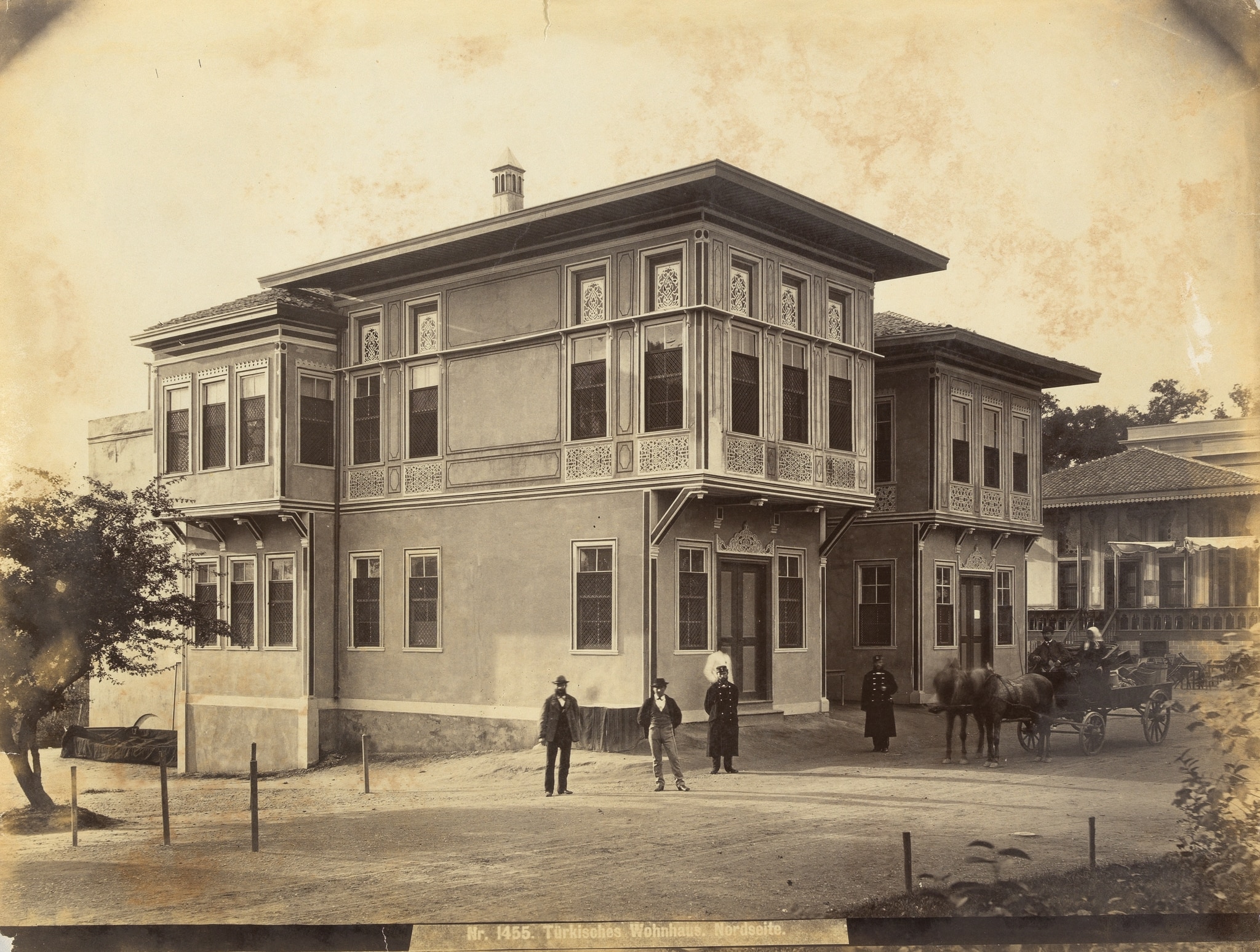Research
The design of the stucco and glass windows of the Turkish dwelling was published as a monochrome illustration in the ‘Observations on Ottoman Ornamentation. Windows’ (‘Bemerkungen zur Osmanischen Ornamentation. Glasscheiben’ / ‘Notices sur l’ornementation ottomane. Vitraux’) in Launay, M. de Die Ottomanische Baukunst / L’Architecture ottomane / Uṣūl-i Miʿmāriyye-i ʿUsmaniyye, Istanbul: Imprimerie et lithographie centrales (1873) Pl. I (IG_388), where it is described as modern window designed by Montani (‘Moderne Glasscheiben von Montani Effendi’ / ‘Vitraux modernes de la composition de Montani Effendi’, p. 79). Pietro Montani was the architect of the Ottoman pavilions at the Vienna world’s fair.
Photographs documenting the Turkish pavilions are solely in black and white, but written sources mention “the splendour of the colours of the glass framework in the upper parts of the windows” of the Turkish dwelling (Maw/Dredge, 1874, p. 381).
The typology with stylized intertwined tendrils, half-palmettes and palmettes is documented for other Ottoman stucco and glass windows. For example, they can be seen in depictions of windows in the Süleymaniye Camii (Süleymaniye Mosque) in Istanbul (IG_234), and the Yeşil Türbe (Green Tomb) in Bursa (IG_245, IG_250), and in depictions of some of the windows in the dome of the Dome of the Rock in Jerusalem by Ernest Tatham Richmond (The Dome of the Rock in Jerusalem, Oxford: Clarendon Press, 1924, fig. 67). However, these examples are not only of a greater scale, but mostly have more delicate perforations and smaller pieces of glass.
The stucco and glass windows presented by the Ottomans in the Pavillon du Bosphore (IG_109) and the Ottoman mosque (IG_108) at the Exposition Universelle in Paris in 1867 were also of this typology.
Dating
1873
Related Locations
Place of Manufacture

